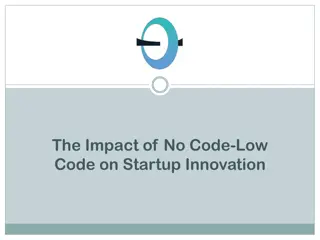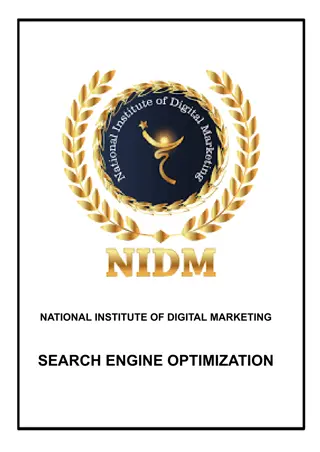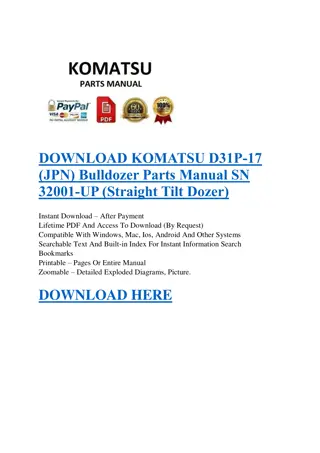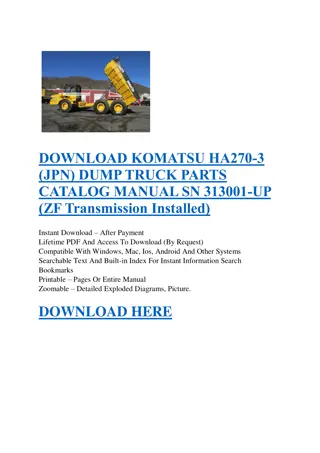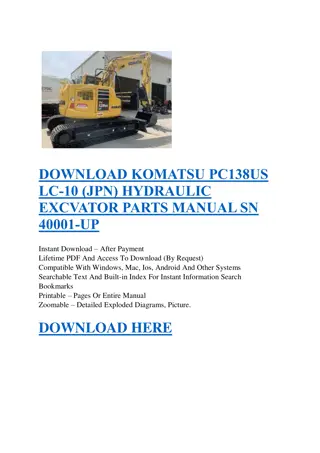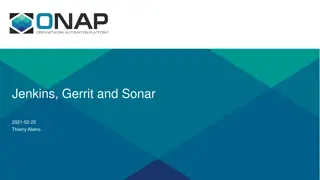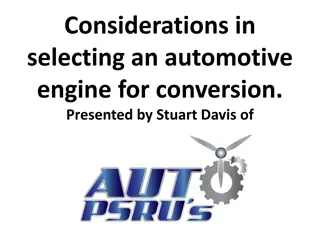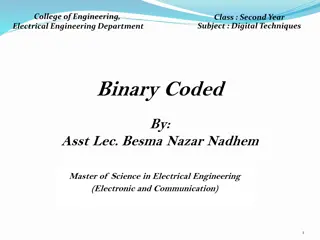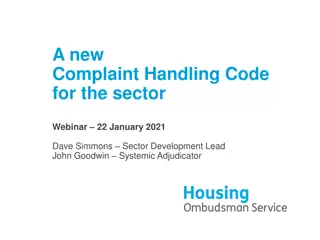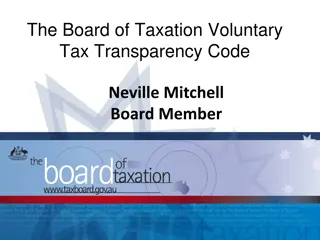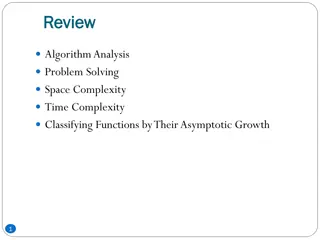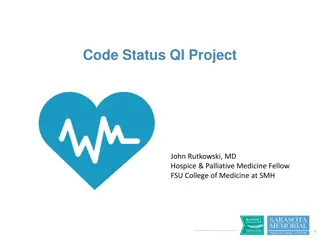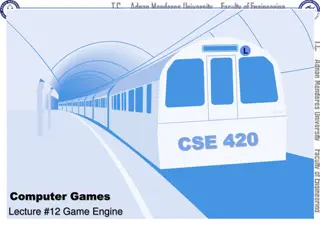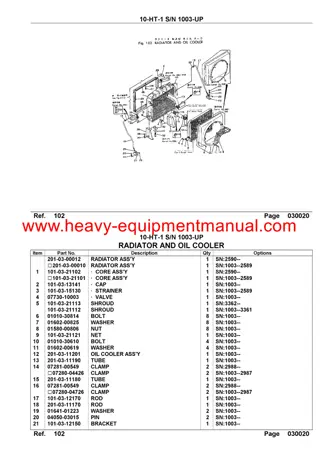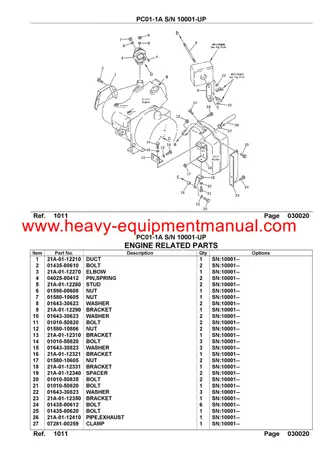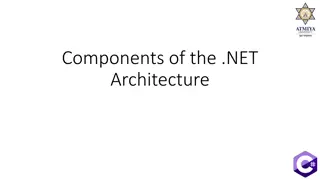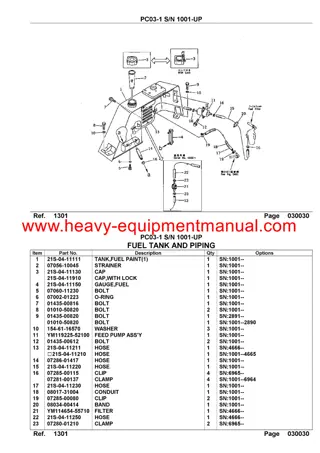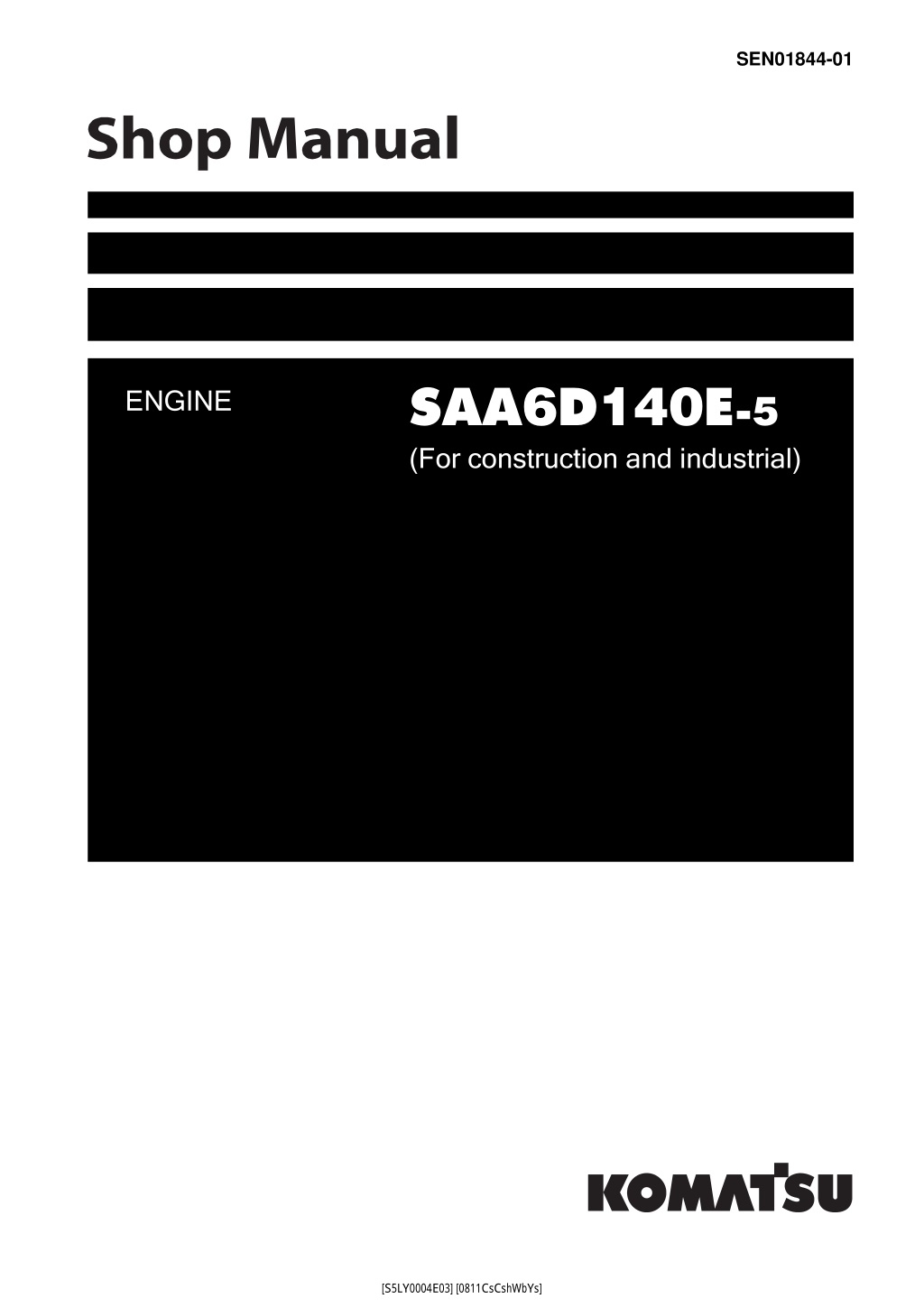
Komatsu SAA6D140E-5 Engine Service Repair Manual Instant Download (Book Code No. SEN01844-01)
Please open the website below to get the complete manualnn//
Download Presentation

Please find below an Image/Link to download the presentation.
The content on the website is provided AS IS for your information and personal use only. It may not be sold, licensed, or shared on other websites without obtaining consent from the author. Download presentation by click this link. If you encounter any issues during the download, it is possible that the publisher has removed the file from their server.
E N D
Presentation Transcript
SEN01844-01 SAA6D140E-5 (For construction and industrial) ENGINE [S5LY0004E03] [0811CsCshWbYs]
SEN01846-01 ENGINE 1SHOP MANUAL SAA6D140E-5 00 Index and foreword Index 1 Composition of shop manual................................................................................................................ 2 Table of contents.................................................................................................................................. 3 1 SAA6D140E-5 [S5LY0004E03] [0811CsCshWbYs]
SEN01846-01 00 Index and foreword Composition of shop manual 1 The contents of this shop manual are shown together with Form No. in a list. Note 1: Always keep the latest version of this manual in accordance with this list and utilize accordingly. The marks shown to the right of Form No. denote the following: Q Q: New issue (to be filed additionally) q: Revision (to be replaced for each Form No.) Note 2: This shop manual can be supplied for each Form No. Note 3: To file this shop manual in the special binder for management, handle it as follows: Place a divider on the top of each section in the file after matching the Tub No. with No. indicated next to each Section Name shown in the table below: File overview and other materials in sections in the order shown below and utilize them accord- ingly. Section Title Form Number Shop Manual, contents binder, binder label and tabs SEN01844-01 00 Index and foreword Index Foreword and general information SEN01845-01 SEN01846-01 q SEN01847-01 q 01 Specification Specification and technical data SEN01848-01 SEN01849-01 q 10 Structure and function Structure and function, Part 1 Structure and function, Part 2 SEN01850-01 SEN01851-01 q SEN01852-01 q 20 Standard value table Standard service value table SEN01853-01 SEN01854-01 q 30 Testing and adjusting Testing and adjusting SEN01855-01 SEN01856-01 q 40 Troubleshooting General information on troubleshooting Troubleshooting of mechanical system (S-mode) Troubleshooting of electrical system (E-mode), Part 1 Troubleshooting of electrical system (E-mode), Part 2 SEN01857-01 SEN01858-01 q SEN01859-01 q SEN01860-01 q SEN01861-01 q 50 Disassembly and assembly General information on disassembly and assembly Disassembly and assembly, Part 1 (with EGR) Disassembly and assembly, Part 2 (EGR-less) Disassembly and assembly, Part 3 SEN01862-01 SEN01863-01 q SEN01864-01 q SEN01865-01 q SEN01866-01 q 2 SAA6D140E-5 [S5LY0004E03] [0811CsCshWbYs]
https://www.ebooklibonline.com Hello dear friend! Thank you very much for reading. Enter the link into your browser. The full manual is available for immediate download. https://www.ebooklibonline.com
00 Index and foreword SEN01846-01 Table of contents 1 00 Index and foreword Index Composition of shop manual................................................................................................... Table of contents ..................................................................................................................... SEN01846-01 2 3 Foreword and general information Safety notice............................................................................................................................ How to read the shop manual.................................................................................................. Handling of electric equipment and hydraulic component....................................................... Handling of connectors newly used for engines...................................................................... How to read electric wire code ................................................................................................ Precautions when carrying out operation ................................................................................ Standard tightening torque table.............................................................................................. Conversion table...................................................................................................................... SEN01847-01 2 7 9 16 19 22 25 28 01 Specification Specification and technical data Outline ..................................................................................................................................... Specifications........................................................................................................................... General view............................................................................................................................ Dimensions table..................................................................................................................... Weight table............................................................................................................................. Engine performance curves..................................................................................................... SEN01849-01 2 6 8 12 13 15 10 Structure and function Structure and function, Part 1 Air intake and exhaust system .................................................................................................... Air intake and exhaust unit ...................................................................................................... EGR system ............................................................................................................................ Engine unit.................................................................................................................................. Cylinder head .......................................................................................................................... Cylinder block.......................................................................................................................... Main moving parts ................................................................................................................... Flywheel and flywheel housing................................................................................................ Vibration damper ..................................................................................................................... Timing gear.............................................................................................................................. Valve system ........................................................................................................................... Structure and function, Part 2 Lubrication system ...................................................................................................................... Lubrication system diagram..................................................................................................... Oil pump.................................................................................................................................. EGR oil pump.......................................................................................................................... Oil filter .................................................................................................................................... Oil cooler ................................................................................................................................. Fuel system................................................................................................................................. CRI system diagram................................................................................................................ Outline of CRI system.............................................................................................................. Structure and operation of CRI system.................................................................................... Structure and operation of component parts ........................................................................... Fuel piping............................................................................................................................... Fuel filter.................................................................................................................................. Priming pump .......................................................................................................................... Engine controller cooler........................................................................................................... SEN01851-01 2 2 9 16 16 18 20 22 23 24 28 SEN01852-01 4 4 8 9 10 12 14 14 15 17 18 36 38 40 41 3 SAA6D140E-5 [S5LY0004E03] [0811CsCshWbYs]
SEN01846-01 00 Index and foreword Cooling system............................................................................................................................ Cooling system diagram.......................................................................................................... Water pump ............................................................................................................................. Water pump mounting.............................................................................................................. Thermostat............................................................................................................................... Corrosion resistor .................................................................................................................... Accessories................................................................................................................................. Front PTO................................................................................................................................ Electrical equipment.................................................................................................................... Alternator................................................................................................................................. Starting motor .......................................................................................................................... Starting aid............................................................................................................................... Engine controller...................................................................................................................... Engine speed sensor............................................................................................................... Engine oil level sensor............................................................................................................. 42 42 44 46 47 48 50 50 52 52 54 55 56 57 58 20 Standard value table Standard service value table Standard service value table ....................................................................................................... Standard service value table for testing, adjusting, and troubleshooting................................. SEN01854-01 2 2 30 Testing and adjusting Testing and adjusting Testing and adjusting (with EGR)................................................................................................ Testing and adjusting tools list................................................................................................. Testing air boost pressure........................................................................................................ Testing exhaust temperature ................................................................................................... Adjusting valve clearance........................................................................................................ Testing blow-by pressure......................................................................................................... Testing engine oil pressure...................................................................................................... Testing EGR valve and bypass valve drive oil pressure.......................................................... Handling fuel system parts ...................................................................................................... Releasing residual pressure in fuel system............................................................................. Testing fuel pressure................................................................................................................ Testing fuel return rate and leakage ........................................................................................ Bleeding air from fuel circuit .................................................................................................... Testing fuel system for leakage ............................................................................................... Adjusting speed sensor ........................................................................................................... Testing and adjusting alternator belt tension ........................................................................... Handling controller high-voltage circuit.................................................................................... Testing and adjusting (EGR-less)................................................................................................ Testing and adjusting tools list................................................................................................. Testing air boost pressure........................................................................................................ Testing exhaust temperature ................................................................................................... Adjusting valve clearance........................................................................................................ Testing blow-by pressure......................................................................................................... Testing engine oil pressure...................................................................................................... Handling fuel system parts ...................................................................................................... Releasing residual pressure in fuel system............................................................................. Testing fuel pressure................................................................................................................ Testing fuel return rate and leakage ........................................................................................ Bleeding air from fuel circuit .................................................................................................... Testing fuel system for leakage ............................................................................................... Adjusting speed sensor ........................................................................................................... Testing and adjusting alternator belt tension ........................................................................... Handling controller high-voltage circuit.................................................................................... SEN01856-01 3 3 5 6 7 8 9 10 11 11 12 13 16 18 19 19 20 21 21 23 24 25 26 27 28 28 29 30 33 35 36 36 37 4 SAA6D140E-5 [S5LY0004E03] [0811CsCshWbYs]
00 Index and foreword SEN01846-01 40 Troubleshooting General information on troubleshooting General information on troubleshooting...................................................................................... Points to remember when troubleshooting.............................................................................. Method of displaying trouble diagnosis lamps (Method of displaying error code)................... Error codes and list.................................................................................................................. Troubleshooting of mechanical system (S-mode) Troubleshooting of mechanical system (S-mode)....................................................................... Troubleshooting of mechanical system (S-mode) ................................................................... S-1 Starting performance is poor............................................................................................. S-2 Engine does not start........................................................................................................ S-3 Engine does not pick up smoothly.................................................................................... S-4 Engine stops during operations ........................................................................................ S-5 Engine does not rotate smoothly ...................................................................................... S-6 Engine lacks output (or lacks power)................................................................................ S-7 Exhaust smoke is black (incomplete combustion) ............................................................ S-8 Oil consumption is excessive (or exhaust smoke is blue)................................................. S-9 Oil becomes contaminated quickly ................................................................................... S-10 Fuel consumption is excessive ....................................................................................... S-11 Oil is in coolant (or coolant spurts back or coolant level goes down).............................. S-12 Oil pressure drops........................................................................................................... S-13 Oil level rises (Entry of coolant/fuel) ............................................................................... S-14 Coolant temperature becomes too high (overheating).................................................... S-15 Abnormal noise is made ................................................................................................. S-16 Vibration is excessive ..................................................................................................... Troubleshooting of electrical system (E-mode), Part 1 Troubleshooting of electrical system (E-mode), Part 1 ............................................................... Information in troubleshooting table ........................................................................................ E-1 Error code [111] Engine Controller Internal Failure........................................................... E-2 Error code [115] Eng. Ne and Bkup Speed Sensor Error.................................................. E-3 Error code [122] Charge Air Press Sensor High Error...................................................... E-4 Error code [123] Charge (boost) Air Press Sensor Low Error........................................... E-5 Error code [131] Throttle Sensor High Error ..................................................................... E-6 Error code [132] Throttle Sensor Low Error...................................................................... E-7 Error code [135] Oil Press. Sensor High Error.................................................................. E-8 Error code [141] Oil Press. Sensor Low Error................................................................... E-9 Error code [143] Eng. Oil Press Low Torque Derate......................................................... E-10 Error code [144] Coolant Temp. Sensor High Error ........................................................ E-11 Error code [145] Coolant Temp. Sensor Low Error ......................................................... E-12 Error code [146] Eng. Overheat...................................................................................... E-13 Error code [153] Charge Air Temp. Sensor High Error ................................................... E-14 Error code [154] Charge Air Temp. Sensor Low Error.................................................... E-15 Error code [187] Sensor Sup. 2 Volt. Low Error.............................................................. E-16 Error code [221] Ambient Air Press. Sensor High Error.................................................. E-17 Error code [222] Ambient Air Press. Sensor Low Error .................................................. E-18 Error code [227] Sensor Sup. 2 Volt. High Error............................................................. E-19 Error code [234] Eng. Overspeed................................................................................... E-20 Error code [238] Ne Speed Sensor Sup. Volt. Error........................................................ E-21 Error code [263] Fuel Temp. Sensor High Error.............................................................. E-22 Error code [265] Fuel Temp. Sensor Low Error .............................................................. E-23 Error code [271] PCV1 Short Error ................................................................................. E-24 Error code [272] PCV1 Open Error................................................................................. E-25 Error code [273] PCV2 Short Error ................................................................................. E-26 Error code [274] PCV2 Open Error................................................................................. E-27 Error code [322] Injector #1 (L/B #1) System Open/Short Error ..................................... E-28 Error code [323] Injector #5 (L/B #5) System Open/Short Error ..................................... E-29 Error code [324] Injector #3 (L/B #3) System Open/Short Error ..................................... SEN01858-01 2 2 3 5 SEN01859-01 4 4 8 10 14 15 16 17 18 20 21 22 23 24 26 28 29 30 SEN01860-01 4 4 6 8 10 14 16 17 18 20 20 22 24 24 26 28 28 30 33 34 37 38 40 42 44 46 48 50 52 54 56 5 SAA6D140E-5 [S5LY0004E03] [0811CsCshWbYs]
SEN01846-01 00 Index and foreword E-30 Error code [325] Injector #6 (L/B #6) System Open/Short Error ..................................... E-31 Error code [331] Injector #2 (L/B #2) System Open/Short Error ..................................... E-32 Error code [332] Injector #4 (L/B #4) System Open/Short Error ..................................... E-33 Error code [342] Engine Controller Data Matching Error ................................................ E-34 Error code [351] INJ. Drive Circuit Error ......................................................................... E-35 Error code [352] Sensor Sup. 1 Volt. Low Error.............................................................. E-36 Error code [386] Sensor Sup. 1 Volt. High Error............................................................. E-37 Error code [415] Eng. Oil Press. Low Speed Derate....................................................... E-38 Error code [441] Supply Voltage Low Error..................................................................... E-39 Error code [442] Supply Voltage High Error.................................................................... Troubleshooting of electrical system (E-mode), Part 2 Troubleshooting of electrical system (E-mode), Part 2................................................................ E-40 Error code [449] Rail Press. High Error 2........................................................................ E-41 Error code [451] Rail Press. Sensor High Error.............................................................. E-42 Error code [452] Rail Press. Sensor Low Error............................................................... E-43 Error code [553] Rail Press. High Error 1........................................................................ E-44 Error code [559] No-pressure Feed By Supply pump 1.................................................. E-45 Error code [689] Eng. Ne Speed Sensor Error................................................................ E-46 Error code [731] Eng. Bkup Speed Sensor Phase Error................................................. E-47 Error code [757] All Engine Controller Data Lost Error ................................................... E-48 Error code [778] Eng. Bkup Speed Sensor Error............................................................ E-49 Error code [1228] EGR Valve Servo Error 1 ................................................................... E-50 Error code [1625] EGR Valve Servo Error 2 ................................................................... E-51 Error code [1626] Bypass Valve Solenoid Drive Short Circuit Error................................ E-52 Error code [1627] Bypass Valve Solenoid Drive Open Error........................................... E-53 Error code [1628] Bypass Valve Servo Error 1................................................................ E-54 Error code [1629] Bypass Valve Servo Error 2................................................................ E-55 Error code [1631] Bypass Valve Lift Sensor High Error .................................................. E-56 Error code [1632] Bypass Valve Lift Sensor Low Error................................................... E-57 Error code [2185] Throttle Sens. Sup. Volt. High Error................................................... E-58 Error code [2186] Throttle Sens. Sup. Volt. Low Error.................................................... E-59 Error code [2249] No-pressure Feed By Supply pump 2 ................................................ E-60 Error code [2271] EGR Valve Lift Sensor High Error ...................................................... E-61 Error code [2272] EGR Valve Lift Sensor Low Error....................................................... E-62 Error code [2351] EGR Valve Solenoid Drive Short Error............................................... E-63 Error code [2352] EGR Valve Solenoid Drive Open Error............................................... E-64 Error code [2555] Intake Air Heater Relay Open Error ................................................... E-65 Error code [2556] Intake Air Heater Relay Short Error.................................................... 58 60 62 64 66 67 68 71 71 71 SEN01861-01 3 3 4 7 7 8 12 14 14 16 19 19 20 21 22 23 24 25 26 27 27 28 29 30 32 33 34 50 Disassembly and assembly General information on disassembly and assembly General information on disassembly and assembly.................................................................... How to read this manual.......................................................................................................... Coating materials list ............................................................................................................... Special tools list....................................................................................................................... Sketches of special tools......................................................................................................... Disassembly and assembly, Part 1 (with EGR) Disassembly and assembly, Part 1 (with EGR)........................................................................... General disassembly of engine ............................................................................................... General assembly of engine.................................................................................................... Disassembly and assembly, Part 2 (EGR-less) Disassembly and assembly, Part 2 (EGR-less)........................................................................... General disassembly of engine ............................................................................................... General assembly of engine.................................................................................................... SEN01863-01 2 2 4 7 8 SEN01864-01 2 2 19 SEN01865-01 2 2 18 6 SAA6D140E-5 [S5LY0004E03] [0811CsCshWbYs]
00 Index and foreword SEN01846-01 Disassembly and assembly, Part 3 Disassembly and assembly, Part 3 ............................................................................................. Removal and installation of fuel supply pump unit (with EGR)................................................ Removal and installation of fuel supply pump unit (EGR-less)................................................ Replacement of oil seal of engine mounted on machine......................................................... SEN01866-01 2 2 4 7 7 SAA6D140E-5 [S5LY0004E03] [0811CsCshWbYs]
SEN01847-01 ENGINE 1SHOP MANUAL SAA6D140E-5 00 Index and foreword Foreword and general information 1 Safety notice................................................................................................................................................... 2 How to read the shop manual......................................................................................................................... 7 Handling of electric equipment and hydraulic component .............................................................................. 9 Handling of connectors newly used for engines ........................................................................................... 16 How to read electric wire code...................................................................................................................... 19 Precautions when carrying out operation...................................................................................................... 22 Standard tightening torque table................................................................................................................... 25 Conversion table........................................................................................................................................... 28 1 SAA6D140E-5 [S5LY0004E03] [0811CsCshWbYs]
SEN01847-01 00 Index and foreword Safety notice Important safety notice Proper service and repair are extremely important for safe machine operation. The service and repair techniques recommended by Komatsu and described in this manual are both effective and safe. Some of these techniques require the use of tools specially designed by Komatsu for the specific purpose. To prevent injury to workers, the symbol k cautions accompanying these symbols should always be followed carefully. If any dangerous situa- tion arises or may possibly arise, first consider safety, and take the necessary actions to deal with the situation. (Rev. 2007/03) k is used to mark safety precautions in this manual. The 7) If welding repairs are needed, always have a trained and experienced welder carry out the work. When carrying out welding work, always wear welding gloves, apron, shielding goggles, cap and other clothes suited for welding work. Before starting work, warm up your body thoroughly to start work under good condi- tion. 1. General precautions k Mistakes in operation are extremely dangerous. Read the Operation and Maintenance Manual carefully before operating the machine. 1) Before carrying out any greasing or repairs, read all the safety plates stuck to the machine. For the locations of the safety plates and detailed explanation of precautions, see the Operation and Main- tenance Manual. 2) Decide a place in the repair workshop to keep tools and removed parts. Always keep the tools and parts in their correct places. Always keep the work area clean and make sure that there is no dirt, water, or oil on the floor. Smoke only in the areas provided for smoking. Never smoke while working. 3) When carrying out any operation, always wear safety shoes and helmet. Do not wear loose work clothes, or clothes with buttons missing. q Always wear safety glasses when hit- ting parts with a hammer. q Always wear safety glasses when grinding parts with a grinder, etc. 4) When carrying out any operation with 2 or more workers, always agree on the oper- ating procedure before starting. Always inform your fellow workers before starting any step of the operation. Before starting work, hang UNDER REPAIR warning signs in the operator's compartment. 5) Only qualified workers must carry out work and operation which require license or qualification. 6) Keep all tools in good condition, learn the correct way to use them, and use the proper ones of them. Before starting work, thoroughly check the tools, machine, fork- lift, service car, etc. 8) Safety points 1 Good arrangement 2 Correct work clothes 3 Following work standard 4 Making and checking signs Prohibition of operation and handling by unlicensed workers 6 Safety check before starting work Wearing protective goggles (for cleaning or grinding work) Wearing shielding goggles and protectors (for welding work) 9 Good physical condition and preparation 10Precautions against work which you are not used to or you are used to too much 5 7 8 2. Preparations for work 1) When disassembling or assembling, sup- port the machine with blocks, jacks, or stands before starting work. 2 SAA6D140E-5 [S5LY0004E03] [0811CsCshWbYs]
00 Index and foreword SEN01847-01 8) When removing piping, stop the fuel or oil from spilling out. If any fuel or oil drips onto the floor, wipe it up immediately. Fuel or oil on the floor can cause you to slip and can even start fires. As a general rule, do not use gasoline to wash parts. Do not use it to clean electri- cal parts, in particular. 10) Be sure to assemble all parts again in their original places. Replace any damaged parts and parts which must not be reused with new parts. When installing hoses and wires, be sure that they will not be dam- aged by contact with other parts when the machine is operated. 11) When installing high pressure hoses, make sure that they are not twisted. Dam- aged tubes are dangerous, so be extremely careful when installing tubes for high pressure circuits. In addition, check that connecting parts are correctly installed. 12) When assembling or installing parts, always tighten them to the specified torques. When installing protective parts such as guards, or parts which vibrate vio- lently or rotate at high speed, be particu- larly careful to check that they are installed correctly. 13) When aligning 2 holes, never insert your fingers or hand. Be careful not to get your fingers caught in a hole. 14) When measuring hydraulic pressure, check that the measuring tools are cor- rectly assembled. 15) If the engine is operated for a long time in a place which is not ventilated well, you may suffer from gas poisoning. Accord- ingly, open the windows and doors to ven- tilate well. 3. Precautions during work 1) Before disconnecting or removing compo- nents of the oil, water, or air circuits, first release the pressure completely from the circuit. When removing the oil filler cap, a drain plug, or an oil pressure pickup plug, loosen it slowly to prevent the oil from spurting out. 2) The coolant and oil in the circuits are hot when the engine is stopped, so be careful not to get scalded. Wait for the oil and coolant to cool before carrying out any work on the oil or water circuits. 3) Before starting work, stop the engine. When working on or around a rotating part, in particular, stop the engine. When checking the machine without stopping the engine (measuring oil pressure, revolving speed, temperature, etc.), take extreme care not to get rolled or caught in rotating parts or moving parts. 4) Before starting work, remove the leads from the battery. Always remove the lead from the negative ( ) terminal first. 5) When raising a heavy component (heavier than 25 kg), use a hoist or crane. Before starting work, check that the slings (wire ropes, chains, and hooks) are free from damage. Always use slings which have ample capacity and install them to proper places. Operate the hoist or crane slowly to prevent the component from hitting any other part. Do not work with any part still raised by the hoist or crane. 6) When removing a cover which is under internal pressure or under pressure from a spring, always leave 2 bolts in diagonal positions. Loosen those bolts gradually and alternately to release the pressure, and then remove the cover. 7) When removing components, be careful not to break or damage the electrical wir- ing. Damaged wiring may cause electrical fires. 9) 3 SAA6D140E-5 [S5LY0004E03] [0811CsCshWbYs]
SEN01847-01 00 Index and foreword 4. Precautions for sling work and making signs 1) Only one appointed worker must make signs and co-workers must communicate with each other frequently. The appointed sign maker must make specified signs clearly at a place where he is seen well from the operator's seat and where he can see the working condition easily. The sign maker must always stand in front of the load and guide the operator safely. q Do not stand under the load. q Do not step on the load. 2) Check the slings before starting sling work. 3) Keep putting on gloves during sling work. (Put on leather gloves, if available.) 4) Measure the weight of the load by the eye and check its center of gravity. 5) Use proper sling according to the weight of the load and method of slinging. If too thick wire ropes are used to sling a light load, the load may slip and fall. 6) Do not sling a load with 1 wire rope alone. If it is slung so, it may rotate and may slip out of the rope. Install 2 or more wire ropes symmetrically. k Slinging with 1 rope may cause turning of the load during hoisting, untwisting of the rope, or slipping of the rope from its original wind- ing position on the load, which can result in a dangerous accident. 7) Limit the hanging angle to 60 , as a rule. Do not sling a heavy load with ropes form- ing a wide hanging angle from the hook. When hoisting a load with 2 or more ropes, the force subjected to each rope will increase with the hanging angle. The table below shows the variation of allow- able load in kN {kg} when hoisting is made with 2 ropes, each of which is allowed to sling up to 9.8 kN {1,000 kg} vertically, at various hanging angles. When the 2 ropes sling a load vertically, up to 19.6 kN {2,000 kg} of total weight can be suspended. This weight is reduced to 9.8 kN {1,000 kg} when the 2 ropes make a hanging angle of 120 . If the 2 ropes sling a 19.6 kN {2,000 kg} load at a lifting angle of 150 , each of them is subjected to a force as large as 39.2 kN {4,000 kg}. 8) When installing wire ropes to an angular load, apply pads to protect the wire ropes. If the load is slippery, apply proper mate- rial to prevent the wire rope from slipping. Use the specified eyebolts and fix wire ropes, chains, etc. to them with shackles, etc. 10) Apply wire ropes to the middle portion of the hook. q Slinging near the tip of the hook may cause the rope to slip off the hook during hoisting. The hook has the maximum strength at the middle por- tion. 9) 11) Do not use twisted or kinked wire ropes. 12) When lifting up a load, observe the follow- ing. q Wind in the crane slowly until wire ropes are stretched. When settling the wire ropes with the hand, do not grasp them but press them from above. If you grasp them, your fingers may be caught. q After the wire ropes are stretched, stop the crane and check the condi- tion of the slung load, wire ropes, and pads. 4 SAA6D140E-5 [S5LY0004E03] [0811CsCshWbYs]
00 Index and foreword SEN01847-01 13) If the hoist stops because of a power fail- ure, turn the power switch OFF. When turning on a switch which was turned OFF by the electric shock prevention earth leakage breaker, check that the devices related to that switch are not in operation state. 14) If you find an obstacle around the hoist, stop the operation. 15) After finishing the work, stop the hoist at the specified position and raise the hook to at least 2 m above the floor. Do not leave the sling installed to the hook. If the load is unstable or the wire rope or chains are twisted, lower the load and lift it up again. Do not lift up the load slantingly. 13) When lifting down a load, observe the fol- lowing. q When lifting down a load, stop it tem- porarily at 30 cm above the floor, and then lower it slowly. q Check that the load is stable, and then remove the sling. q Remove kinks and dirt from the wire ropes and chains used for the sling work, and put them in the specified place. q q 7. Selecting wire ropes 1) Select adequate ropes depending on the weight of parts to be hoisted, referring to the table below. 5. Precautions for using mobile crane a Read the Operation and Maintenance Manual of the crane carefully in advance and operate the crane safely. Wire ropes (Standard Z twist ropes without galvanizing) (JIS G3525, No. 6, Type 6X37-A) Nominal diameter of rope mm 10 12 14 16 18 20 25 30 40 141.6 50 221.6 60 318.3 6. Precautions for using overhead hoist crane k When raising a heavy part (heavier than 25 kg), use a hoist, etc. In Disas- sembly and assembly, the weight of a part heavier than 25 kg is indicated after the mark of 4 1) Before starting work, inspect the wire ropes, brake, clutch, controller, rails, over wind stop device, electric shock preven- tion earth leakage breaker, crane collision prevention device, and power application warning lamp, and check safety. 2) Observe the signs for sling work. 3) Operate the hoist at a safe place. 4) Check the direction indicator plates (east, west, south, and north) and the directions of the control buttons without fail. 5) Do not sling a load slantingly. Do not move the crane while the slung load is swinging. 6) Do not raise or lower a load while the crane is moving longitudinally or laterally. 7) Do not drag a sling. 8) When lifting up a load, stop it just after it leaves the ground and check safety, and then lift it up. 9) Consider the travel route in advance and lift up a load to a safe height. 10) Place the control switch on a position where it will not be an obstacle to work and passage. 11) After operating the hoist, do not swing the control switch. 12) Remember the position of the main switch so that you can turn off the power immedi- ately in an emergency. Allowable load kN 8.8 12.7 17.3 22.6 28.6 35.3 55.3 79.6 ton 0.9 1.3 1.7 2.3 2.9 3.6 5.6 8.1 14.4 22.6 32.4 4. a The allowable load is one-sixth of the breaking strength of the rope used (Safety coefficient: 6). 5 SAA6D140E-5 [S5LY0004E03] [0811CsCshWbYs]
SEN01847-01 00 Index and foreword 8. Precautions for disconnecting and con- necting hoses and tubes in air conditioner circuit 1) Disconnection k Collect the air conditioner refriger- ant (R134a) from the air condi- tioner circuit in advance. k If the refrigerant gas (R134a) gets in your eyes, you may lose your sight. Accordingly, when collect- ing or filling it, you must be quali- fied for handling the refrigerant and put on protective goggles. a Ask professional traders for collecting and filling operation of refrigerant (R134a). a Never release the refrigerant (R134a) to the atmosphere. 2) Connection 1] When installing the air conditioner cir- cuit hoses and tubes, take care that dirt, dust, water, etc. will not enter them. 2] When connecting the air conditioner hoses and tubes, check that O-rings (1) are fitted to their joints. 3] Check that each O-ring is not dam- aged or deteriorated. 4] When connecting the refrigerant pip- ing, apply compressor oil for refriger- ant (R134a) (DENSO: ND-OIL8, ZEXEL: ZXL100PG (equivalent to PAG46)) to its O-rings. a Example of O-ring (Fitted to every joint of hoses and tubes) a For tightening torque, see the precautions for installation in each section of "Disassembly and assembly". 6 SAA6D140E-5 [S5LY0004E03] [0811CsCshWbYs]
00 Index and foreword SEN01847-01 How to read the shop manual 1 Materials and specifications are subject to change without notice. q 1. Composition of shop manual This shop manual contains the necessary technical information for services performed in a workshop. For ease of understanding, the manual is divided into the following sections. 00. Index and foreword This section explains the shop manuals list, table of contents, safety, and basic information. 01. Specification This section explains the specifications of the machine. 10. Structure, function and maintenance standard This section explains the structure, function, and maintenance standard values of each component. The structure and function sub-section explains the structure and function of each component. It serves not only to give an understanding of the structure, but also serves as reference material for troubleshooting. The maintenance standard sub-section explains the criteria and remedies for dis- assembly and service. 20. Standard value table This section explains the standard values for new machine and judgement criteria for testing, adjusting, and troubleshooting. This standard value table is used to check the standard values in testing and adjusting and to judge parts in troubleshooting. 30. Testing and adjusting This section explains measuring instruments and measuring methods for testing and adjusting, and method of adjusting each part. The standard values and judgement criteria for testing and adjusting are explained in Testing and adjusting. 40. Troubleshooting This section explains how to find out failed parts and how to repair them. The troubleshooting is divided by failure modes. 50. Disassembly and assembly This section explains the special tools and procedures for removing, installing, disassembling, and assembling each component, as well as precautions for them. In addition, tightening torque and quantity and weight of coating material, oil, grease, and coolant necessary for the work are also explained. 7 SAA6D140E-5 [S5LY0004E03] [0811CsCshWbYs]
SEN01847-01 00 Index and foreword 2. Symbols Important safety and quality portions are marked with the following symbols so that the shop manual will be used practically. Symbol k Item Remarks Safety Special safety precautions are necessary when performing work. Special technical precautions or other precautions for preserving stan- dards are necessary when performing work. Weight of parts of component or parts. Caution necessary when selecting hoisting wire, or when working posture is important, etc. Places that require special attention for tightening torque during assembly. a Caution 4 3 2 Weight Tightening torque Coat Places to be coated with adhesives, etc. during assembly. 5 6 Oil, coolant Places where oil, etc. must be added, and capacity. Drain Places where oil, etc. must be drained, and quantity to be drained. 3. Units In this shop manual, the units are indicated with International System of units (SI). For reference, con- ventionally used Gravitational System of units is indicated in parentheses { }. 8 SAA6D140E-5 [S5LY0004E03] [0811CsCshWbYs]
00 Index and foreword SEN01847-01 Handling of electric equipment and hydraulic component To maintain the performance of the machine over a long period, and to prevent failures or other troubles before they occur, correct operation , maintenance and inspection , troubleshooting , and repairs must be carried out. This section deals particularly with correct repair procedures for mechatronics and is aimed at improving the quality of repairs. For this purpose, it gives section on Handling electric equipment . 1 Points to remember when handling electric equipment 1. Handling wiring harnesses and connectors Wiring harnesses consist of wiring connecting one component to another component, con- nectors used for connecting and disconnecting one wire from another wire, and protectors or tubes used for protecting the wiring. Compared with other electrical components fit- ted in boxes or cases, wiring harnesses are more likely to be affected by the direct effects of rain, water, heat, or vibration. Furthermore, during inspection and repair operations, they are frequently removed and installed again, so they are likely to suffer deformation or damage. For this reason, it is necessary to be extremely careful when handling wiring harnesses. 2. Main failures occurring in wiring harness 1) Defective contact of connectors (defec- tive contact between male and female) Problems with defective contact are likely to occur because the male connector is not properly inserted into the female con- nector, or because one or both of the con- nectors is deformed or the position is not correctly aligned, or because there is cor- rosion or oxidization of the contact sur- faces. The corroded or oxidized contact surfaces may become shiny again (and contact may become normal) by connect- ing and disconnecting the connector about 10 times. 2) Defective crimping or soldering of connec- tors The pins of the male and female connec- tors are in contact at the crimped terminal or soldered portion, but if there is exces- sive force brought to bear on the wiring, the plating at the joint will peel and cause improper connection or breakage. 9 SAA6D140E-5 [S5LY0004E03] [0811CsCshWbYs]
SEN01847-01 00 Index and foreword 3) Disconnections in wiring If the wiring is held and the connectors are pulled apart, or components are lifted with a crane with the wiring still connected, or a heavy object hits the wiring, the crimping of the connector may separate, or the sol- dering may be damaged, or the wiring may be broken. 4) High-pressure water entering connector The connector is designed to make it diffi- cult for water to enter (drip-proof struc- ture), but if high-pressure water is sprayed directly on the connector, water may enter the connector, depending on the direction of the water jet. Accordingly, take care not to splash water over the connector. The connector is designed to prevent water from entering, but at the same time, if water does enter, it is difficult for it to be drained. Therefore, if water should get into the connector, the pins will be short-cir- cuited by the water, so if any water gets in, immediately dry the connector or take other appropriate action before passing electricity through it. 5) Oil or dirt stuck to connector If oil or grease are stuck to the connector and an oil film is formed on the mating sur- face between the male and female pins, the oil will not let the electricity pass, so there will be defective contact. If there is oil or grease stuck to the connector, wipe it off with a dry cloth or blow it dry with com- pressed air and spray it with a contact restorer. a When wiping the mating portion of the connector, be careful not to use excessive force or deform the pins. a If there is oil or water in the com- pressed air, the contacts will become even dirtier, so remove the oil and water from the compressed air com- pletely before cleaning with com- pressed air. 10 SAA6D140E-5 [S5LY0004E03] [0811CsCshWbYs]
Suggest: For more complete manuals. Please go to the home page. https://www.ebooklibonline.com If the above button click is invalid. Please download this document first, and then click the above link to download the complete manual. Thank you so much for reading
00 Index and foreword SEN01847-01 3. Removing, installing, and drying connec- tors and wiring harnesses 1) Disconnecting connectors 1] Hold the connectors when discon- necting. When disconnecting the connectors, hold the connectors. For connectors held by a screw, loosen the screw fully, then hold the male and female connectors in each hand and pull apart. For connectors which have a lock stopper, press down the stopper with your thumb and pull the connec- tors apart. a Never pull with one hand. 2] q When removing from clips Both of the connector and clip have stoppers, which are engaged with each other when the connector is installed. When removing a connector from a clip, pull the connector in a parallel direction to the clip for removing stop- pers. a If the connector is twisted up and down or to the left or right, the housing may break. q 3] Action to take after removing connec- tors After removing any connector, cover it with a vinyl bag to prevent any dust, dirt, oil, or water from getting in the connector portion. a If the machine is left disassem- bled for a long time, it is particu- larly easy for improper contact to occur, so always cover the con- nector. 11 SAA6D140E-5 [S5LY0004E03] [0811CsCshWbYs]
SEN01847-01 00 Index and foreword 2) Connecting connectors 1] Check the connector visually. Check that there is no oil, dirt, or water stuck to the connector pins (mating portion). Check that there is no deformation, defective contact, corrosion, or dam- age to the connector pins. Check that there is no damage or breakage to the outside of the con- nector. a If there is any oil, water, or dirt stuck to the connector, wipe it off with a dry cloth. If any water has got inside the connector, warm the inside of the wiring with a dryer, but be careful not to make it too hot as this will cause short circuits. a If there is any damage or break- age, replace the connector. 2] Fix the connector securely. Align the position of the connector correctly, and then insert it securely. For connectors with the lock stopper, push in the connector until the stop- per clicks into position. 3] Correct any protrusion of the boot and any misalignment of the wiring har- ness. For connectors fitted with boots, cor- rect any protrusion of the boot. In addition, if the wiring harness is mis- aligned, or the clamp is out of posi- tion, adjust it to its correct position. a If the connector cannot be cor- rected easily, remove the clamp and adjust the position. q If the connector clamp has been removed, be sure to return it to its original position. Check also that there are no loose clamps. 12 SAA6D140E-5 [S5LY0004E03] [0811CsCshWbYs]
https://www.ebooklibonline.com Hello dear friend! Thank you very much for reading. Enter the link into your browser. The full manual is available for immediate download. https://www.ebooklibonline.com


